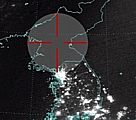 |
|
North Korea mistakenly believes there are U.S. nuclear weapons in South Korea. |
By Hans M. Kristensen
The North Korean newspaper Rodong Sinmun reportedly has issued a statement saying the U.S. has 1,000 nuclear weapons in South Korea. In this regional war of rhetoric it is important to at least get one fact right: The United States does not have nuclear weapons in South Korea. It used to – at some point close to 1,000 – but the last were withdrawn in 1991.
The only nuclear weapons the United States has in the Pacific today are the hundreds of warheads deployed on Trident II D5 sea-launched ballistic missiles on board eight Ohio-class nuclear-powered submarines patrolling in the Pacific Ocean. Some of them may be earmarked for potential use against targets in North Korea. Other weapons for bombers could be moved into the region if necessary, but they’re not today.
The North Korean obsession with the U.S. nuclear “threat” might be seen as confirmation that the nuclear deterrent works and hopefully will deter North Korea from attacking anyone. But the flip side of the coin is to what extent the U.S. nuclear posture in the Pacific – past and present – helps feed the North Korean nuclear rhetoric and perhaps even ambitions.
Additional information: A history of U.S. nuclear weapons deployment to and withdrawal from South Korea.
Satellite imagery has long served as a tool for observing on-the-ground activity worldwide, and offers especially valuable insights into the operation, development, and physical features related to nuclear technology.
This report outlines a framework relying on “Cooperative Technical Means” for effective arms control verification based on remote sensing, avoiding on-site inspections but maintaining a level of transparency that allows for immediate detection of changes in nuclear posture or a significant build-up above agreed limits.
The grant comes from the Carnegie Corporation of New York (CCNY) to investigate, alongside The British American Security Information Council (BASIC), the associated impact on nuclear stability.
Satellite imagery of RAF Lakenheath reveals new construction of a security perimeter around ten protective aircraft shelters in the designated nuclear area, the latest measure in a series of upgrades as the base prepares for the ability to store U.S. nuclear weapons.